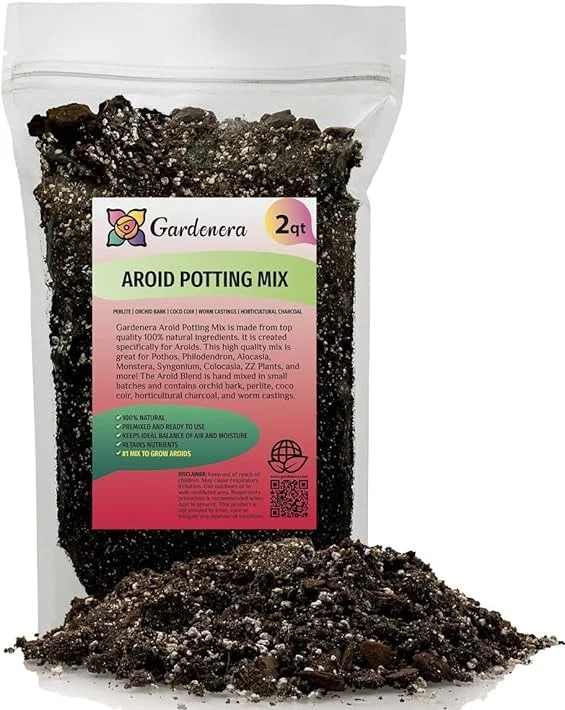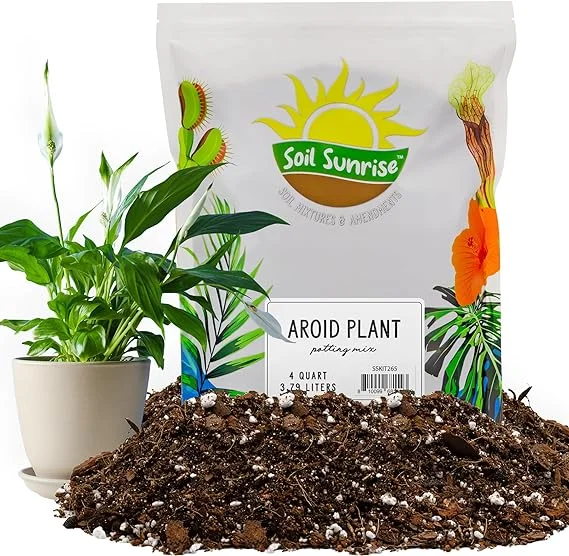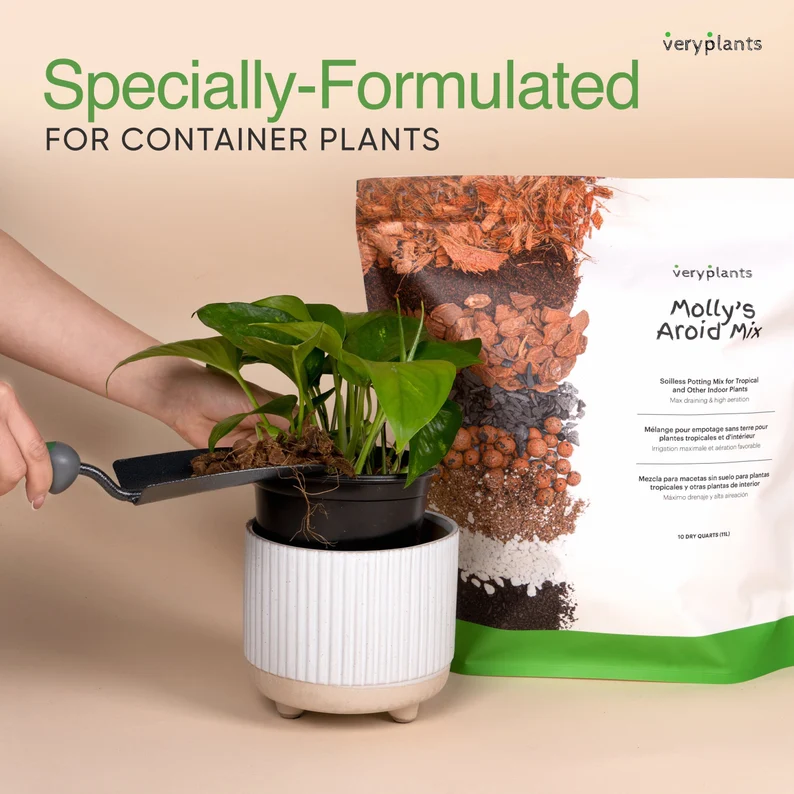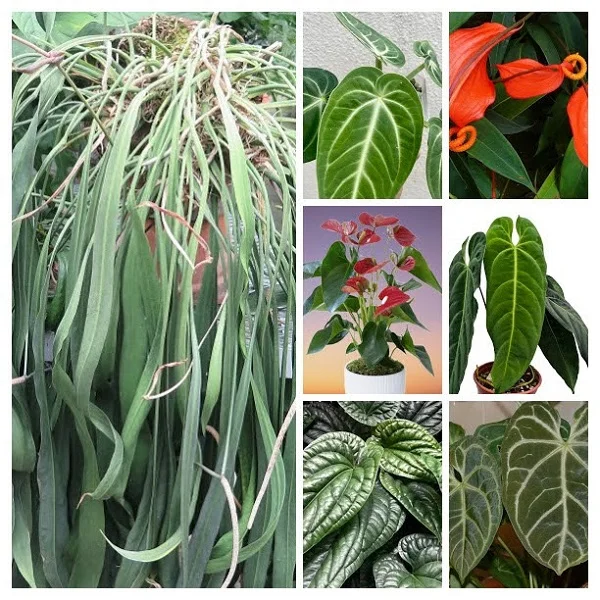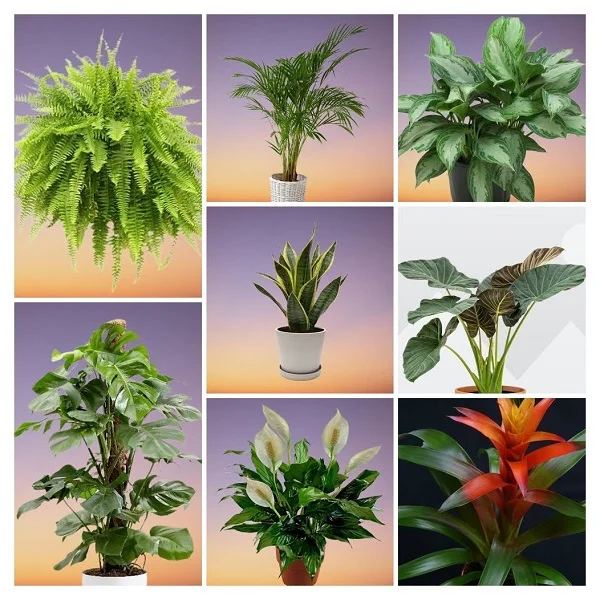Anthurium clarinervium (Velvet Cardboard Anthurium) Indoor, Propagation and Problems
Some links in this post may be affiliate links
Anthurium clarinervium (Velvet Cardboard Anthurium) prefers bright indirect light, moderately warm and humid conditions and moist, fertile, aroids potting mix coupled with fortnightly feeding during the growing period.
Anthurium clarinervium often called Velvet Cardboard Anthurium is one of the rare Anthurium varieties which is liked for its venation pattern whose 1 cm wide veins vary in color between ivory and light green.
The ovate, deeply-lobed, velvety leaves, resembling a love heart with whitish veins are a spectacular sight to behold which makes Velvet Cardboard Anthurium one of the most sought after plants.
Anthurium clarinervium is often mistaken for Anthurium crystallinum and Anthurium magnificum due to the their similarity in appearance though they differ in size and leaf presentation.

Botanical name: Anthurium clarinervium
Family: Araceae
Common name: Velvet Cardboard Anthurium
Origin
Anthurium clarinervium is native to Mexico in South America where it is found growing as an epiphyte, climbing on tree-trunks to get to the canopy for sunlight.
Size
Anthurium clarinervium can grow to a height of 2 feet and the leaves can be 1 foot wide if it is grown in the right growing conditions.
Toxicity
Like other Anthuriums, Anthurium clarinervium is considered toxic to both humans and pets. Anthuriums contain oxalate crystals which can cause digestive distress, breathing problems and skin irritation. Keep the plants away from children and pets. Always wear gloves when handling this plant and wash your hands thereafter.
Where to Buy
If you are looking to add Anthurium clarinervium to your collection, vibrant plants are available online on Etsy (Link to Etsy).
Anthurium clarinervium Care Indoors
Anthurium clarinervium (Velvet Cardboard Anthurium) thrives in bright indirect light, average warmth of 18-270C, humidity of 50-60% and moist, fertile, aroids potting mix coupled with fortnightly feeding during the growing period.
Velvet Cardboard Anthurium requires removal of yellow and dead leaves to keep it neat as well as minimize pest and disease infestations. Repotting is only needed when it is pot-bound. Keep reading for more on the best growing conditions for this plant.
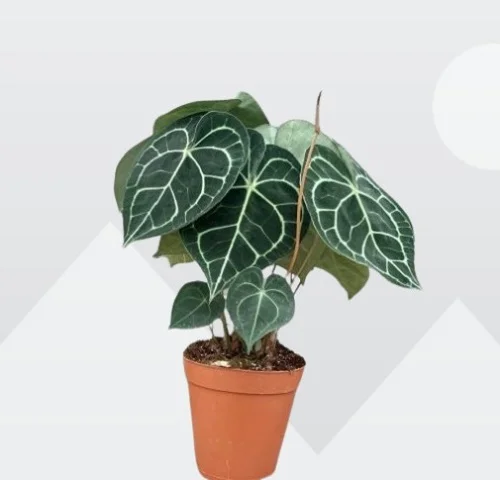
Light Requirements
Anthurium clarinervium grows best in bright indirect light (partial shade). Keep it away from hot direct sunshine as it can scorch the leaves leaving it with ugly, brown marks.
If the natural lighting in your home is not sufficient, consider instaling grow lights to supplement it. Take a look at these full spectrum grow lights available on Amazon.
Turn the pot regularly to ensure that the plant receives light on all sides for uniform growth and avoid lop-sided growth.
Temperature and Humidity
Anthurium clarinervium does well in average warmth of 18-270C. Keep it away from cold drafts to prevent sudden changes in temperature as they can cause reduced growth.
Average humidity between 50-60% is adequate for Velvet Cardboard Anthurium. However, if the humidity is below 50%, set the pot on a wet pebble tray or use a humidifier to raise humidity. You can also grow the plant in a closed terrarium.
Gently damp wipe the leaves with a soft cloth to get rid of dust. Dry any water droplets on the leaves and ensure that there is good air circulation to prevent fungal infestations.
Watering
Water Anthurium clarinervium thoroughly during the growing season when the top 1-2 in. of soil feels dry to the touch and keep soil consistently moist.
Cut down on watering in the cold season as growth is minimal to maintain the soil slightly moist but do not let it dry out completely.
Use room temperature water to avoid shocking the plant. Ensure to use chlorine-free water as the plant is sensitive to chlorine and other chemicals dissolved in water. Avoid wetting the foliage as it can lead to fungal diseases.
Ascertain that the pot has a drainage hole and always empty the saucer after watering to prevent the soil from getting soggy as it can result in root-rot and loss of the plant.
Fertilizer
Feed Anthurium clarinervium every 4-6 weeks during the growing period with a balanced, water-soluble fertilizer. Withhold feeding in the cold season as growth is minimal at this time and feeding it at this time can result in fertilizer burn.
To get rid of accumulated salts as they can negatively affect growth, regularly run a stream of water through the soil until the water drips through the drainage hole. Allow it to run for a few minutes and repeat the process several times to clear the salts.
Potting Mix
The best potting mix for Anthurium clarinervium should be rich in organic matter and well-drained to prevent it from getting soggy while providing the required nutrients. Most potting mixes designed for aroids are ideal for the plant.
Repotting
Repot Anthurium clarinervium every 1-2 years at the beginning of the growing season when pot-bound. Use a pot one size larger than the current one and chunky aroids soil that is rich in organic matter.
Ensure that the pot has a drainage hole to prevent the soil from getting soggy as it can lead to root-rot and eventual death of the plant. Check out these self watering pots on Amazon.
Pruning
Pruning Anthurium clarinervium involves removal of yellow and dead leaves to maintain the plant tidy and to reduce pest and disease infestations.
Cut the leaves at the base of the stem with a sharp sterlized knife or a clean pair of scissors to avoid unnecessary injuries which can result in disease infestations. Cut away any wayward leaves to maintain the shape of the plant.
Propagation
Anthurium clarinervium can be propagated during the growing season from offshoots . Below is an outline on propagation from offshoots.
How to propagate Anthurium clarinervium from offshoots
Water the Anthurium clarinervium thoroughly at least 1 day before to make it easier to divide and also hasten establishment. A well hydrated plant suffers less shock and takes a shorter time to take root.
Carefully, slip the plant out of its pot and carefully seperate the offshoot from the mother plant. Ensure the offshoot has adequate roots and at least 2 leaves to hasten establishment.
Select a 6 or 8 inch pot and ensure that the pot has a drainage hole to prevent the soil from getting soggy as it can lead to rotting.
Fill the pot with loose, well-drained, potting mix and make a hole in the center of the pot. Ensure that the hole is slightly wider than the root base of the offshoot.
Place the offshoot in the previously made hole and lightly firm the soil around the base while taking care not to bury it too deep; maintain the offshoot at the same soil level it was in the previous pot.
Water the soil thoroughly and place the set up in a well-lit, warm place until the new Velvet Cardboard Anthurium is well established after which you can begin routine care.
Related: How to Propagate Anthurium Plants by 5 Easy Methods
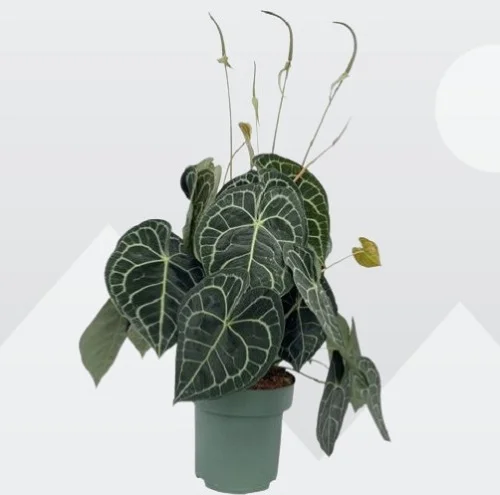
Anthurium clarinervium Problems
Velvet Cardboard Anthurium problems include brown leaves, yellow leaves, brown leaf tips, drooping leaves, brown leaf spots, pests and diseases among others. Keep reading for more on these problems and how to fix them.
Brown leaves
Some of the possible causes of brown leaves in Anthurium are incorrect watering, too little light, improper feeding, poor quality soil, being root-bound, pests, diseases, hot temperatures, age among others.
Diseases
Anthurium clarinervium is prone to root-rot disease which is more prevalent in soggy soil brought about by poor soil drainage. To keep root-rot away, maintain the soil moist but not soggy by ensuring that the pot has a drainage hole and that the soil is loose and free-draining. Read more on how to treat root-rot in houseplants.
Pests
Common pests in Anthurium clarinervium are spider mites, aphids and mealybugs. Isolate the affected plant to prevent spread to other plants to minimize spread and treat it with appropriate products like neem oil or insecticidal soap as per the manufacturer's instructions.
Yellow leaves
There are a number of possible causes of yellow leaves in Anthurium clarinervium. One possible cause of yellow leaves is soggy soil. Keep the soil moist but not soggy. Ensure that the pot has a drainage hole and the soil is free-draining to prevent the soil from getting soggy.
The second cause of yellow leaves in Velvet Cardboard Anthurium is cold drafts or cold air. Protect the plant from cold drafts or place it away from windy doors and windows.
Drooping leaves
There are four possible causes of drooping leaves in Anthurium clarinervium. One possible cause of drooping leaves is low humidity. To increase humidity, set the pot on a wet pebble tray.
The second possible cause of drooping leaves in Velvet Cardboard Anthurium is incorrect watering; either underwatering or overwatering. Maintain the soil moist at all times during the growing season and never allow the soil ball to dry out completely or to be soggy. Read more on how to water houseplants the correct way.
The third possible cause of drooping leaves in Anthurium clarinervium is too high temperature due to exposure to hot direct sunlight. Keep the plant away from hot direct sunlight by filtering the light with a sheer curtain.
The fourth possible cause of drooping leaves in Velvet Cardboard Anthurium is pests and diseases infestation. Regularly inspect your plant and take timely control measures for these pests.
Brown leaf tips
Two possible reasons are responsible for brown leaf tips in Anthurium clarinervium. One main reason for brown leaf tips is too low humidity (below 50%). Set the pot on a wet pebble tray or use a cool mist humidifier to increase humidity.
The second possible reason for brown leaf tips in Velvet Cardboard Anthurium is soggy soil. Keep the soil moist but not soggy by ensuring that the pot has a drainage hole and the soil is well-drained that is it drains easily.
Brown leaf spots
The brown leaf spots are sun scorch marks caused by exposure of the Anthurium clarinervium to hot direct sunlight. Move the plant to a shaded place or use a curtain to filter the sunlight.
You liked it? Share on social media.
Related Content
Amazon Associates Disclosure
Homeplantsguide.com is a participant in the Amazon Services LLC Associates Program, an affiliate advertising program designed to provide a means for sites to earn advertising fees by advertising and linking to amazon.com.
